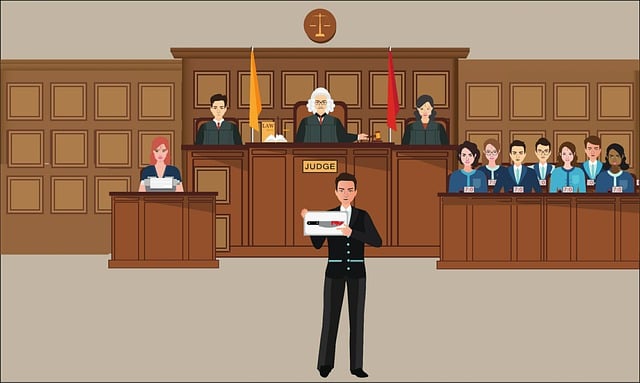In a world where accidents and injuries can happen in the blink of an eye, the question of when an injury warrants court charges becomes a complex and intriguing topic. While many injuries are unfortunate outcomes of unforeseen circumstances, there are instances where legal action becomes a crucial avenue for seeking justice and accountability. This blog post delves into the delicate balance between accidents and negligence, exploring the factors that determine whether an injury rises to the level of justifying court charges. From defining negligence to examining the role of intent, join us as we unravel the intricate web of scenarios where an injury becomes a matter for the courts to decide.

Negligence and Liability
Negligence and liability form the foundational legal principles when determining if an injury warrants court charges. Negligence involves a failure to exercise reasonable care, resulting in harm to another party.
Establishing liability requires demonstrating that the defendant owed a duty of care to the injured party, breached that duty, and directly caused the injuries through their actions or omissions. As seen at atlanta-injurylawyer.com, you can work with experienced legal professionals who specialize in personal injury cases and have a deep understanding of the complexities involved in establishing liability.
Court will assess whether the defendant’s conduct fell below the standard of care expected in the given circumstances. Negligence cases often hinge on proving foreseeability, where the harm was reasonably foreseeable as a consequence of the defendant’s actions. Successful establishment of negligence and liability is vital for pursuing court charges in injury cases.
Seriousness and Impact of the Injury
The gravity of an injury and its consequential impact play a pivotal role in determining the viability of court charges. Courts consider the extent of physical, emotional, and psychological harm inflicted upon the victim. Severe injuries resulting in significant impairment, disability, or long-term effects are more likely to lead to court involvement. The depth of suffering endured by the injured party is assessed, including medical expenses, pain, suffering, and diminished quality of life.
Courts differentiate between minor injuries that may be addressed through civil remedies and those causing substantial harm that merit legal action. The severity and lasting repercussions of the injury directly influence the pursuit of court charges.
Intent and Criminal Liability
Intent and criminal liability constitute a crucial dichotomy in injury-related court charges. Intent involves the deliberate desire to cause harm, leading to criminal charges if proven. These cases hinge on demonstrating that the accused had a conscious purpose to injure the victim. Criminal liability extends beyond mere negligence, holding individuals accountable for their intentional actions.
Assault and battery are prime examples where intent to harm is a central element. The presence of criminal intent elevates the charges from civil matters to criminal offenses, potentially leading to penalties like fines, probation, or imprisonment. Intent remains a pivotal factor in determining the severity of court charges in injury cases.
Role of Gross Negligence and Recklessness
The role of gross negligence and recklessness is paramount in shaping court charges stemming from injuries. Gross negligence signifies a marked departure from reasonable care, displaying a blatant disregard for the safety of others. Courts evaluate if the defendant’s actions were far below acceptable standards, increasing the likelihood of charges.
Recklessness, on the other hand, involves consciously taking risks that pose a substantial danger to others, showcasing a conscious indifference to potential harm. Cases involving gross negligence or recklessness often result in escalated charges due to the heightened culpability of the responsible party, reflecting a legal emphasis on accountability for deliberate and highly careless behavior.
Causation and Proving Liability
Causation and proving liability are intricate aspects pivotal to determining court charges in injury cases. Causation necessitates demonstrating a direct link between the defendant’s actions and the resulting harm suffered by the plaintiff. The “but-for” and proximate cause tests scrutinize whether the injury would have occurred “but for” the defendant’s actions and if those actions were a foreseeable cause of the harm.
Successfully establishing causation requires a thorough analysis of the sequence of events and potential contributing factors. The burden of proving liability rests on the plaintiff, who must convincingly connect the defendant’s conduct to the injury, ensuring a clear and compelling case for court charges.
Statutory Violations and Strict Liability

Statutory violations and strict liability hold significance in determining court charges for injuries. Statutes and regulations set forth specific standards of conduct, the breach of which can lead to legal consequences irrespective of intent or negligence. Strict liability imposes responsibility on defendants, even in the absence of fault, when engaged in inherently dangerous activities or producing defective products.
Court charges may arise if injuries result from non-compliance with established rules, emphasizing the importance of adhering to legal mandates. This legal framework reinforces accountability in situations where harm occurs due to non-compliance, ensuring that those responsible are held liable regardless of their state of mind or degree of care exercised.
The decision to pursue court charges for injuries hinges on a complex interplay of factors, including negligence, intent, severity of harm, and legal standards. Whether through proving negligence or intent, evaluating the gravity of injuries, or considering statutory violations, the legal system strives to ensure accountability and justice. Understanding these key subheadings provides insight into how injuries are assessed within the legal realm, ultimately guiding the path towards appropriate legal actions and potential remedies for the affected parties.



